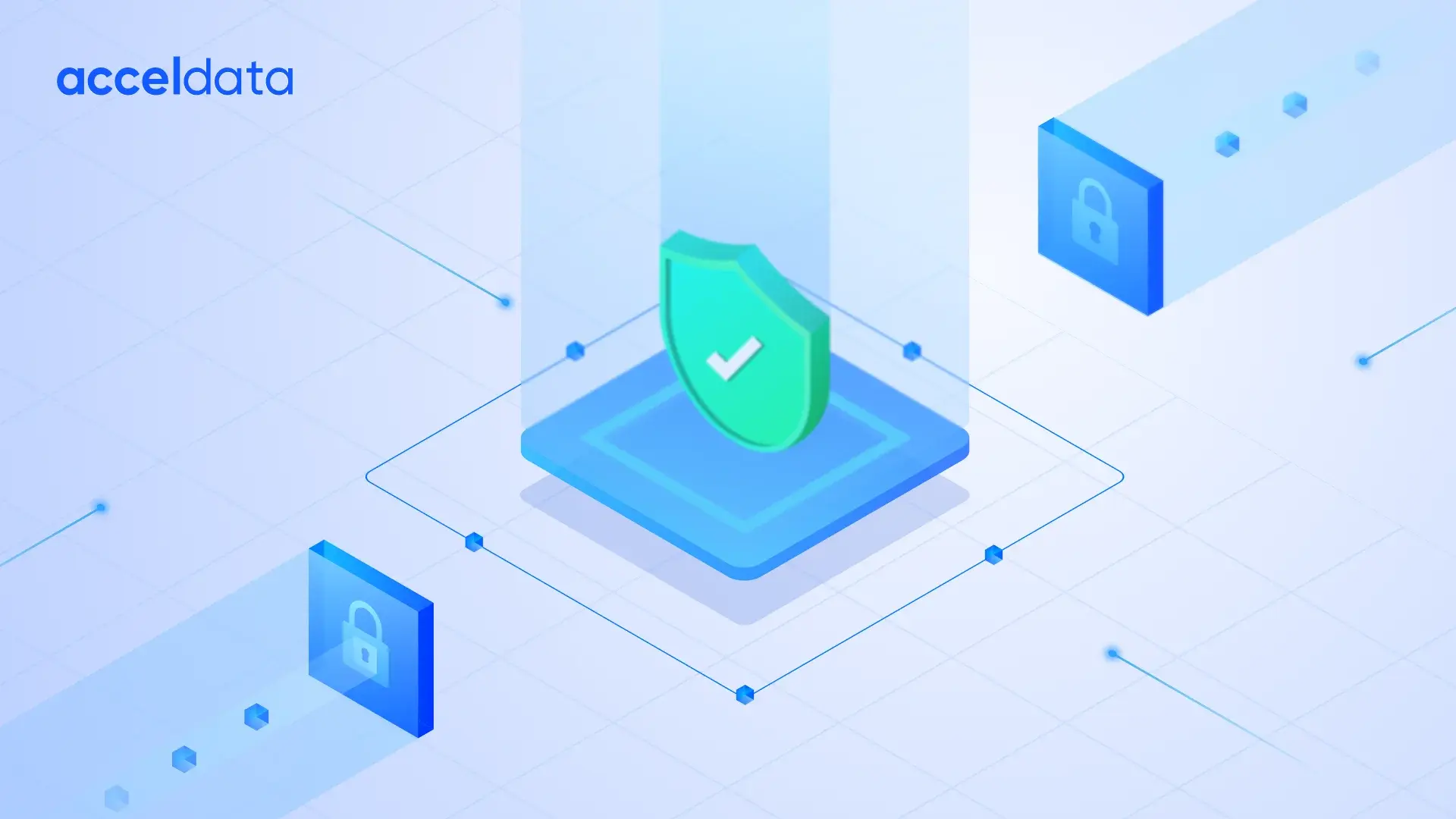In an ideal situation, data can open up new opportunities and optimize business strategies. However, much of this valuable information is dispersed across multiple systems, poorly organized, and difficult to find. This raises a significant challenge: How can businesses fully make use of their data when it isn't usable?
Effective data aggregation provides a solution. Businesses can gain actionable insights by aggregating and organizing disparate data sources. Whether it's improving customer service, identifying ways to increase customer lifetime value, or identifying performance risks and opportunities in terms of pricing and valuation, the potential benefits are too great to pass up.
In this article, we'll look at what data aggregation is, why it's important, and how it can help businesses transform their fragmented information into a valuable resource.
What Is Data Aggregation?
Data aggregation is the process of gathering and combining information from various sources to create a larger, more comprehensive database. A process like that is essential in fields like statistics, business intelligence, and data analysis.
To put it in business terms, imagine you're trying to better understand your target audience. You can gather data from a variety of sources, including purchase histories, website interactions, customer feedback, and social media activity. By combining these various pieces of information, you can build an even more comprehensive and detailed profile of your customers.
This comprehensive understanding lets you customize your marketing strategies, improve customer service, and better respond to the needs of a variety of situations.
Importance of Data Aggregation
With data aggregation, you’ll be able to make sense of massive amounts of information. By aggregating your data, you can expect:
- Improved Decision-Making: Aggregated data offers an extensive understanding, which ultimately will support you and your business in making better choices.
- Improved Efficiency: Summarizing detailed data into digestible insights will save you both time and effort while leading to more efficient analysis.
- Trend Identification: Aggregated data reveals patterns and trends that are necessary for market analysis, research, and planning.
Types of Data Aggregation
Data aggregation comes in different shapes and forms, depending on what you’re trying to analyze or achieve. Here are some of the most common types:
Time-Based Aggregation
Here you organize data according to time periods. For example, you can analyze website traffic by day, week, or month to identify trends over time. It helps you detect shopping patterns or trends in seasonal sales, among many other use cases.
Category-Based Aggregation
In this type, you organize data by categories or labels that are relevant to your analysis. Consider organizing sales data by product type, customer demographic, or region. This method will help you to understand how different sections are doing and will also highlight your main opportunities or challenges.
Spatial Aggregation
This data aggregation type focuses on location-based data. For example, a logistics company might aggregate delivery times by city to see which areas have delays. It’s perfect for businesses that need to make location-driven decisions, like optimizing delivery routes or choosing new store locations.
Hybrid Aggregation
As the name suggests, hybrid aggregation is the combination of the types we just saw. For example, if you’re aiming to analyze customer behavior for specific products over a month, you might want to combine time-based and category-based approaches. This flexibility allows you to get a more complete picture by looking at data from multiple angles.
Each type of aggregation has its strengths, so the best choice or combination depends on your goals. The key is to think about what insights you need and pick the approach that gets you there most effectively.
Data Aggregation Methods
There are different methods for aggregating data. Choosing the right method depends on your data size, complexity, goals, and the tools you have available. Let’s look at three common approaches.
Manual Data Aggregation
This method is exactly what it sounds like—hands-on and manual. It usually involves organizing and calculating data with spreadsheets or basic tools. Formulas can sum sales, calculate averages, and count unique entries. Although simple and accessible, it can become time-consuming and error-prone as datasets grow. It works best for small tasks or when automation isn't possible.
Automated Data Aggregation Solutions
For larger datasets, automation is a lifesaver. Tableau and Power BI can calculate totals, averages, minimums, and maximums with a few clicks. These solutions also provide real-time insights by pulling data from multiple sources. Businesses with large amounts of data need automation to reduce human error and speed up the process.
Machine Learning in Data Aggregation
Machine learning enhances automation. It aggregates data and finds patterns and trends without explicit instructions. For example, a machine learning model may analyze customer purchase history to predict sales trends or segment customers by behavior. This method is powerful for finding insights in complex datasets but requires advanced tools and expertise.
Each method has its place. Manual techniques are great for small-scale tasks, automated tools streamline routine calculations, and machine learning unlocks deeper, more predictive insights.
Challenges in Data Aggregation
Data aggregation is necessary for actionable insights but can be challenging.
Data Quality and Accuracy
One of the most significant concerns is ensuring that the data is clean, accurate, and reliable. Data is frequently collected from a variety of sources, including spreadsheets, databases, and unstructured files like PDFs and images. Errors and inconsistencies can creep in without sufficient validation and standardization, resulting in inaccurate analyses.
Security and Privacy Concerns
Handling sensitive data, especially in industries like healthcare, requires strict safeguards to protect against breaches. Aggregated data can expose vulnerabilities if it isn’t stored or processed securely, which puts a heavy emphasis on encryption, access controls, and compliance with regulations like GDPR or HIPAA.
Handling Large Volumes of Data
The huge amount of data coming from various sources can overwhelm systems, especially when you have to deal with both structured and unstructured formats. To combine, normalize, and standardize data while keeping performance high, businesses need reliable tools and effective processes.
Ensuring Data Consistency
Inconsistent data formats and coding systems can easily mess up your aggregation efforts. For example, healthcare data may include multiple coding standards like ICD or SNOMED, requiring thorough normalization to ensure everything aligns properly.
Addressing these challenges involves combining the right people, processes, and platforms to manage data effectively while maintaining high quality and security standards.
Data Aggregation Applications
From everyday conveniences to strategic business decisions, data aggregation plays a significant role in simplifying and making sense of the information we encounter daily.
Personal Applications
Think about the apps you use every day. A weather app, for example, aggregates information from numerous weather stations to deliver a localized forecast. Fitness trackers collect and compile your activity data—like steps taken or calories burned—into weekly or monthly summaries, making it easier to spot trends in your habits.
Business Applications
For companies, data aggregation supports everything from sales reports to customer insights. A quarterly sales report, for instance, consolidates data from various regions to provide an overall picture of performance. Businesses also aggregate customer feedback or social media data to identify trends and improve their products or services.
Broader Impacts
Beyond personal and business use, data aggregation drives advancements in fields like healthcare, where it combines patient data from different sources to improve care or finance, where it’s used to analyze market trends.
Data Aggregation Tools
Here's an overview of some commonly used data aggregation tools.
Power BI: Microsoft Power BI provides a simple way to visualize and aggregate data without coding. Users can quickly generate reports and uncover actionable insights thanks to its drag-and-drop functionality and AI-powered Copilot, making it ideal for business use.
Looker Studio: Google's Looker Studio excels at connecting data from multiple sources, allowing for quick transformations and powerful visualizations. Its dynamic features, such as pivot tables and interactive charts, make it simple to share insights across teams and platforms.
Tableau: Tableau is well-known for its powerful data visualization and aggregation capabilities. Its interactive dashboards simplify complex data exploration and support a variety of data sources, allowing businesses to easily uncover insights.
Alteryx: Alteryx's drag-and-drop interface simplifies data analysis. Advanced features include predictive modeling, spatial analysis, and AI-driven insights. It simplifies data preparation and forecasting for technical and non-technical users.
These tools meet a wide range of needs, from real-time processing to AI-enhanced analytics, making them useful for organizations looking to make data-driven decisions.
Make the Most of Your Data with Acceldata
Data aggregation helps us see the bigger picture, uncover patterns, and make informed decisions. It’s not just a technical process—it’s a way of connecting the dots.
Acceldata is a leading enterprise data observability platform designed to tackle common data challenges, including monitoring, detecting, investigating, and resolving issues. It empowers enterprise data teams across industries to take control of their complex data ecosystems. With Acceldata, you can optimize data spend, enhance data ROI, ensure high-quality data, and streamline data operations.
Ready to get more out of your data? Request a demo today!
This post was written by Alex Doukas. Alex’s main area of expertise is web development and everything that comes along with it. He also has extensive knowledge of topics such as UX design, big data, social media marketing, and SEO techniques.













.webp)
.webp)


